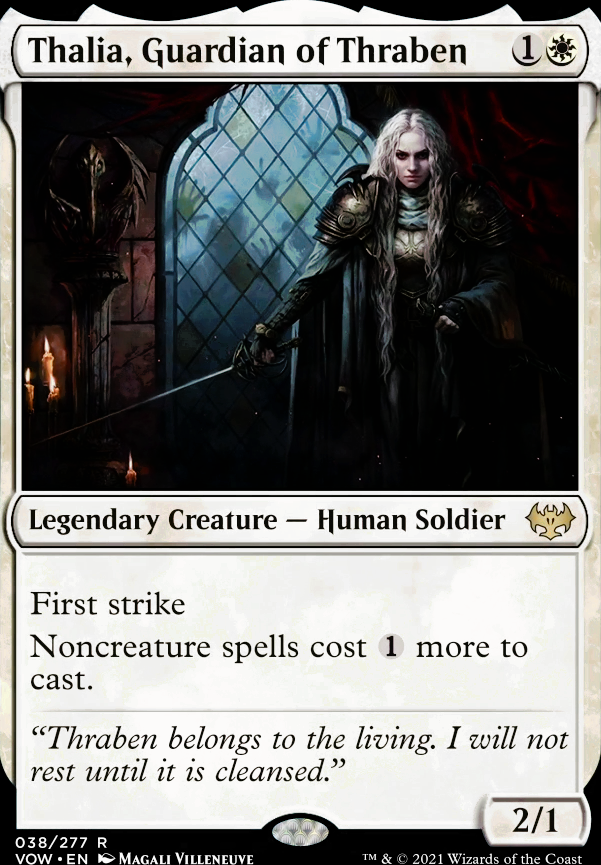Creature (27)
Land (23)
Sideboard
Creature (5)
Planeswalker (2)
Maybeboard
Creature (9)
Artifact (5)
Suggestions
Updates Add
Comments
Attention! Complete Comment Tutorial! This annoying message will go away once you do!
Important! Formatting tips — Comment Tutorial — markdown syntax
Please login to comment
Revision 11 See all
(6 years ago)
| -2 | Containment Priest | side |
| +1 | Fiend Hunter | side |
| +1 | Flickerwisp | main |
| +2 | Gideon, Ally of Zendikar | side |
| +1 | Mangara of Corondor | main |
| +1 | Mishra's Factory | main |
| -1 | Mother of Runes | main |
| +2 | Path to Exile | side |
| +1 | Pithing Needle | side |
| -1 | Plains | main |
| +1 | Recruiter of the Guard | main |
| +1 | Sanctum Prelate | main |
| +1 | Sword of War and Peace | side |
| Date added | 8 years |
| Last updated | 6 years |
| Legality | This deck is Legacy legal. |
| Rarity (main - side) | 4 - 3 Mythic Rares 32 - 11 Rares 15 - 1 Uncommons |
| Cards | 61 |
| Avg. CMC | 2.13 |
| Tokens | Emblem Gideon, Ally of Zendikar, Knight Ally 2/2 W, Phyrexian Germ 0/0 B |
| Folders | Fun decks |
| Votes | |
| Ignored suggestions | |
| Shared with | |
| Views |

